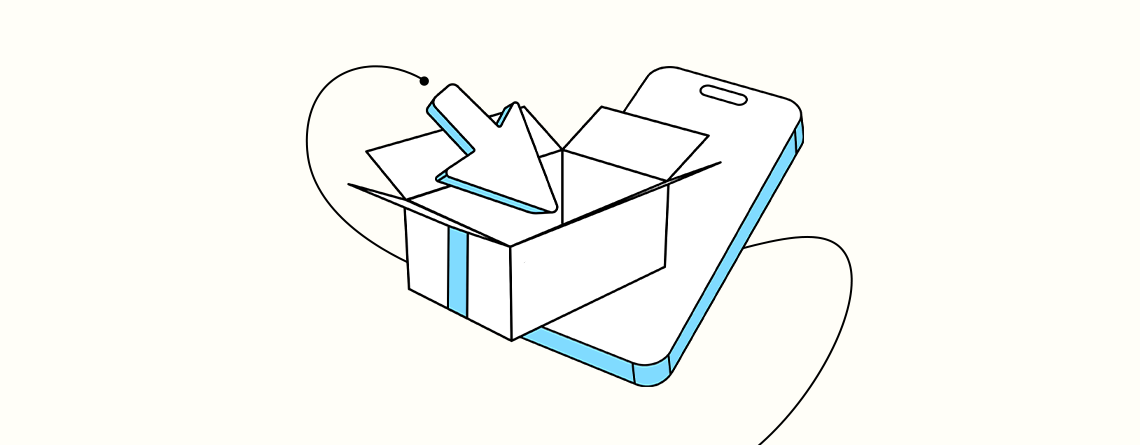Impact by Tariffs and Recessionary fears
The Consumer and Brands
Consumers don’t react to actual market conditions but rather a perception of market conditions And their personal financial position. (See Consumer Sentiment above) Today’s consumer faces adversity from all sides; higher prices from tariffs, higher interest rates, and non-existent savings. Prepare for a more stretched consumer than in 2008 or 2020. During a recessionary period it is beneficial to consider the psychological state of your audience, take into consideration the consumers’ emotional reactions to the economic environment. Those consumers with a positive outlook will continue to spend through a downturn.
Personal Savings are almost gone
The personal savings through Covid have not be sustained, the consumers have spent through this additional cash over the last 2 years.
Consumer Sentiment remains low but rising
Geopolitical instability can drive reduced sentiment even as markets are outperforming the ‘08 recovery. Main Street vs Wall Street.
Credit Delinquency Rates – 1.5% to 3%
Delinquency Rates are back above pre-Covid levels but nowhere near the ‘08 crisis.
Credit Card Balances continue to rise
+50% from Covid lows and +30% vs pre-Covid. Buy Now Pay Later and Credit Cards are being used more frequently as consumers run out of savings.
Consumer Staples, Utilities and Real Estate remain strong due to a flight to safety, defensive positioning, and expectations of future rate cuts. Consumer Discretionary and Information Technology have been the worst performers. IT contains the semiconductor subset facing headwinds from geopolitical uncertainty, plus bloated valuations prior to tariff uncertainty. Automobiles and Textiles have seen ~30% declines from global supply disruption and fear of a consumer slow down.
Your marketing efforts should not be dependent on broad public equities performance but we understand the need to react to a changing business environment. These are the times when marketing dollars go furthest. Think through the second and third order effects and consider how you can support the business around you.
Overview Recession fears have grown in 2025, uncertainty and volatility continue to grow, and the consumer appears to be in a tenuous financial position. Consumer brands, Industrials, eCommerce/SMBs, certain B2B services are all impacted. Direct effects, add a 125% tariff(averaged out as as the cost is diversified across the supply chain, think Vietnam, India, Indonesia) on new Nikes, iPhones, or most of what you buy. There are second and thirds order effects, ie your clients can no longer afford to swap service providers or upgrade their usage. How will your brand be impacted, what verticals and industries? How do consumers react? What have brands done in prior recessions?
The Market for Marketers
Here to support your brand in any market
For more information on your sector or brand please reach out to: luke.f@brainlabsdigital.com
React by becoming more aggressive with the right audiences and with the right message
DotCom (2001), the GFC (2008), and Covid (2020), saw 10-15% declines in ad spend. In 2020, Audio and OOH spends declined 20-30% (excluding political advertising) and Digital grew by ~8%.. Don’t destroy your funnel, think about trading down not out, reduce your frequency to save the incremental customer, focus on existing vs new, move to value and quality messaging. Be bold and increase your share of voice amidst declining CPMs and noise.
Brands that increased or maintained advertising spend during recession saw 256% higher sales growth post-recovery than those who cut spending (only 19% growth) – McGraw-Hill.
What we are seeing
CPMs by Platform
LinkedIn CPMs flat/declining (B2B uncertainty) vs. overall digital CPMs up ~100% since 2019.
Digital advertising remains resilient, with Alphabet, Amazon, and Meta projected to control >50% of the market by 2029
Recession opportunity: CPMs drop as competitors pull back (e.g., 2008 saw -27% newspaper, -22% radio, but only -2% digital)
Competitive Advantages in Downturns
- Cost efficiency: Lower media prices (+256% sales growth post-recession for brands that maintained spend).
- Reduced noise: 8% higher purchase intent when ads align with content.
- Market share capture: Amazon’s Kindle launch during the 2008 recession succeeded due to less competition.
Reducing Digital Wastage
- Contextual targeting: Ads placed alongside aligned content boost ROI by 8%.
- Platform shifts: Prioritize YouTube/CTV (70% video consumption via streaming by 2029) with strict brand-suitability tools.
- Audience refinement: Use exclusion lists to avoid misaligned content and diversify beyond English-language campaigns.
Rework Messaging
Existing customers:
- Highlight value/quality over discounts.
- Leverage retention campaigns (cheaper than acquisition).
New customers:
- Align with social causes (69% prefer brands supporting conscious causes).
- Use geo-targeting for local audiences amid declining tourism
Winning in the Downturn
Overview As discussed a slowing economy and tariffs impacts the consumer, with knock on effects for brands. It also impacts the way we buy media, whether that’s the cost of buying, or the channels we buy on.
Global ad spend growth downgraded to 6.7% in 2025 ($1.15 trillion), a $20 billion cut from prior forecasts due to tariffs, EU regulations, and stagflation risks. Let’s take a quick look at how Digital CPMs have been impacted and think through how we can approach a changing digital landscape.
For more information on your sector or brand please reach out to: luke.f@brainlabsdigital.com
Digital CPMs
CPMs by Platform
Advertisers intend to decrease budgets due to tariffs. The size of these cuts is not known. 41% of advertisers expect Social budget cuts, this is likely one of their largest line items. 43% of respondents expect “Other Traditional Media” cuts, likely OOH, Experiential, and Print. Only 13% expect CTV cuts, consumers tend to stay home during economic stress, meaning their usage of streaming services and connected TV will increase. As advertisers pull back on these channels it will create opportunities for brands to find efficient niches and new audiences that have less exposure from competition.
Here to support your brand in any market



